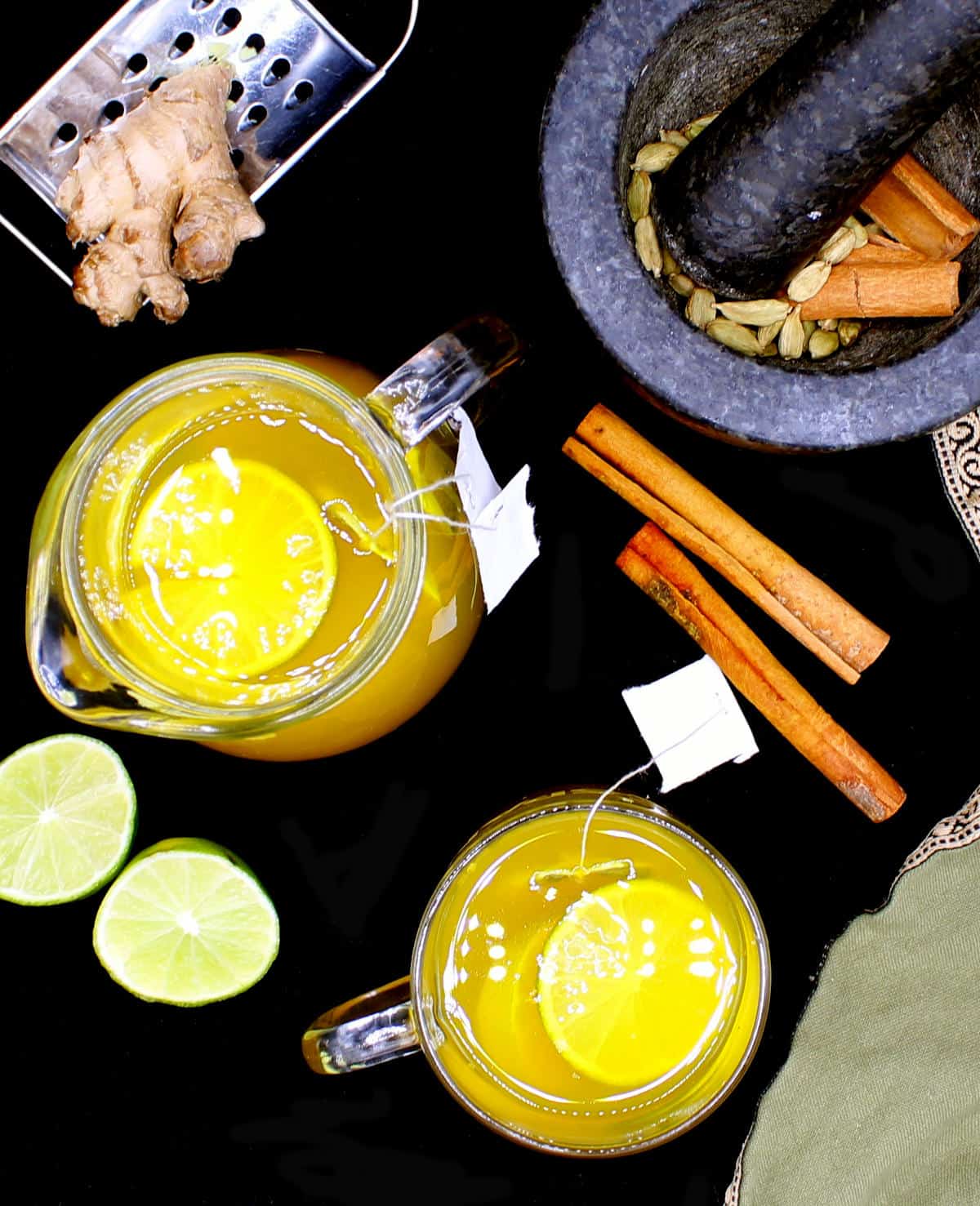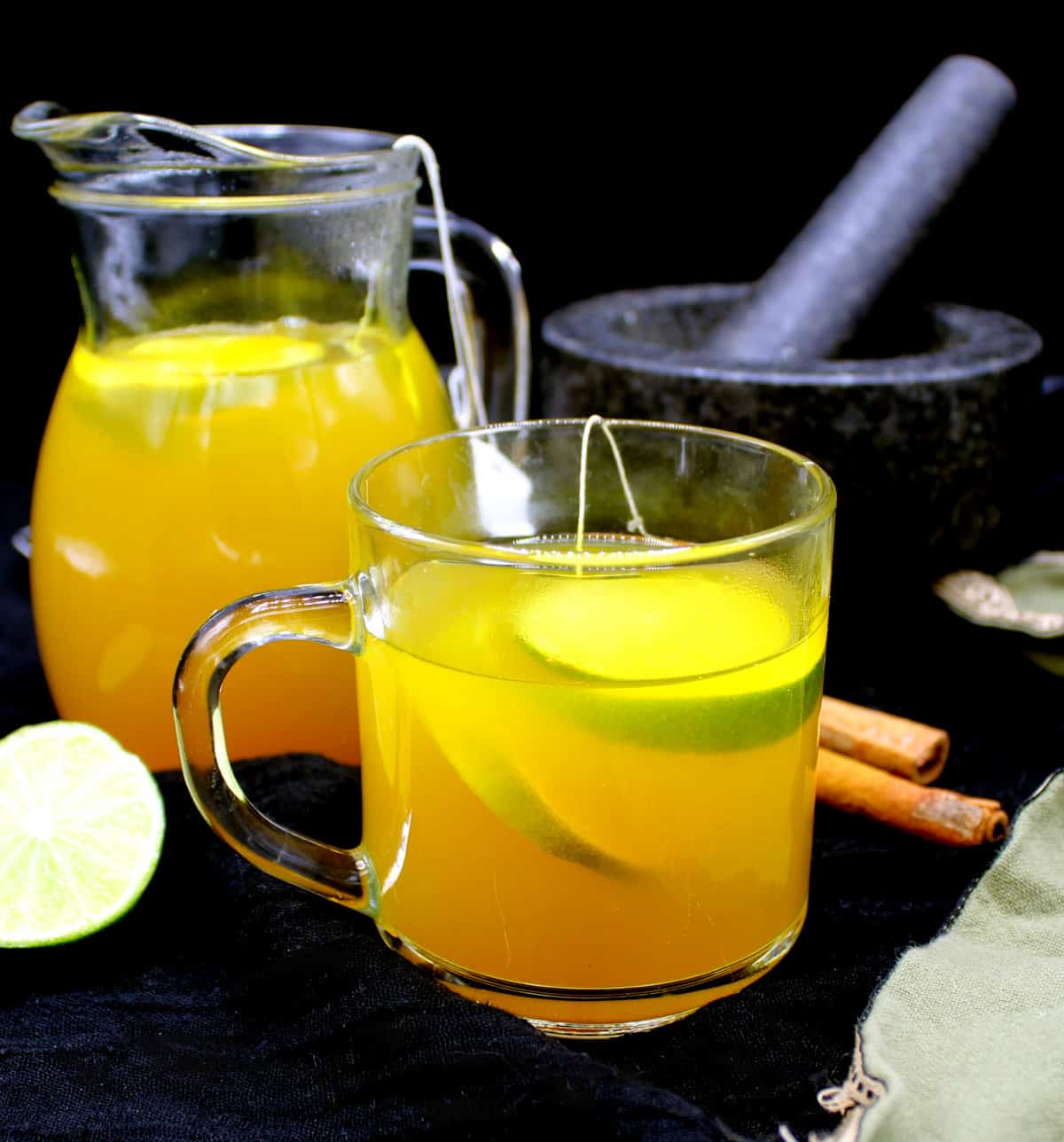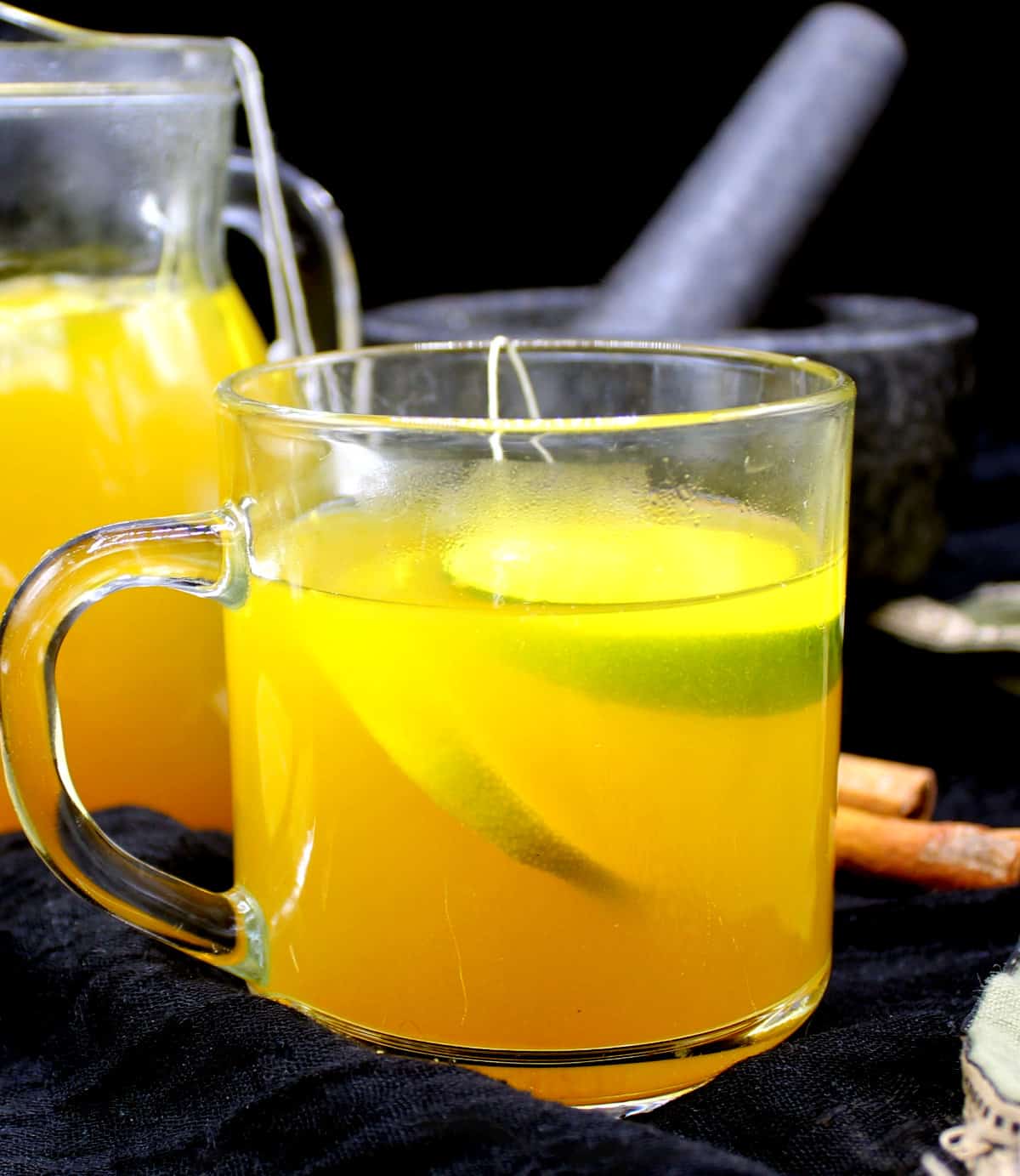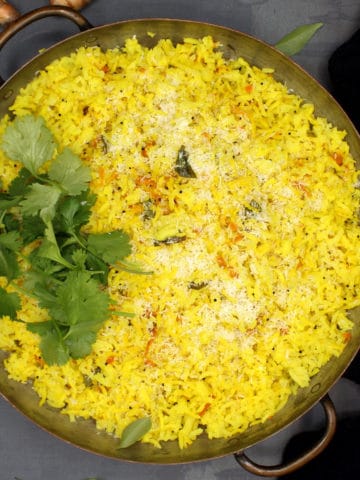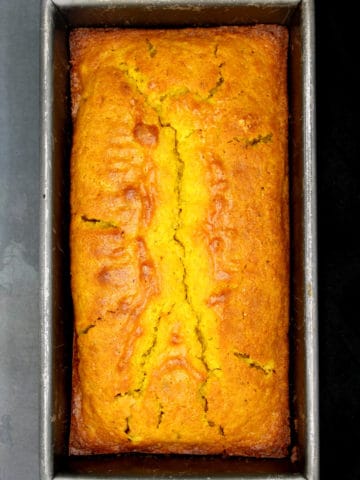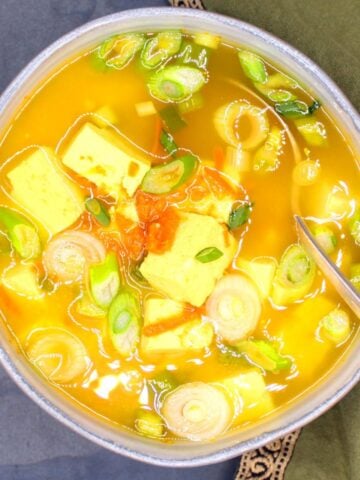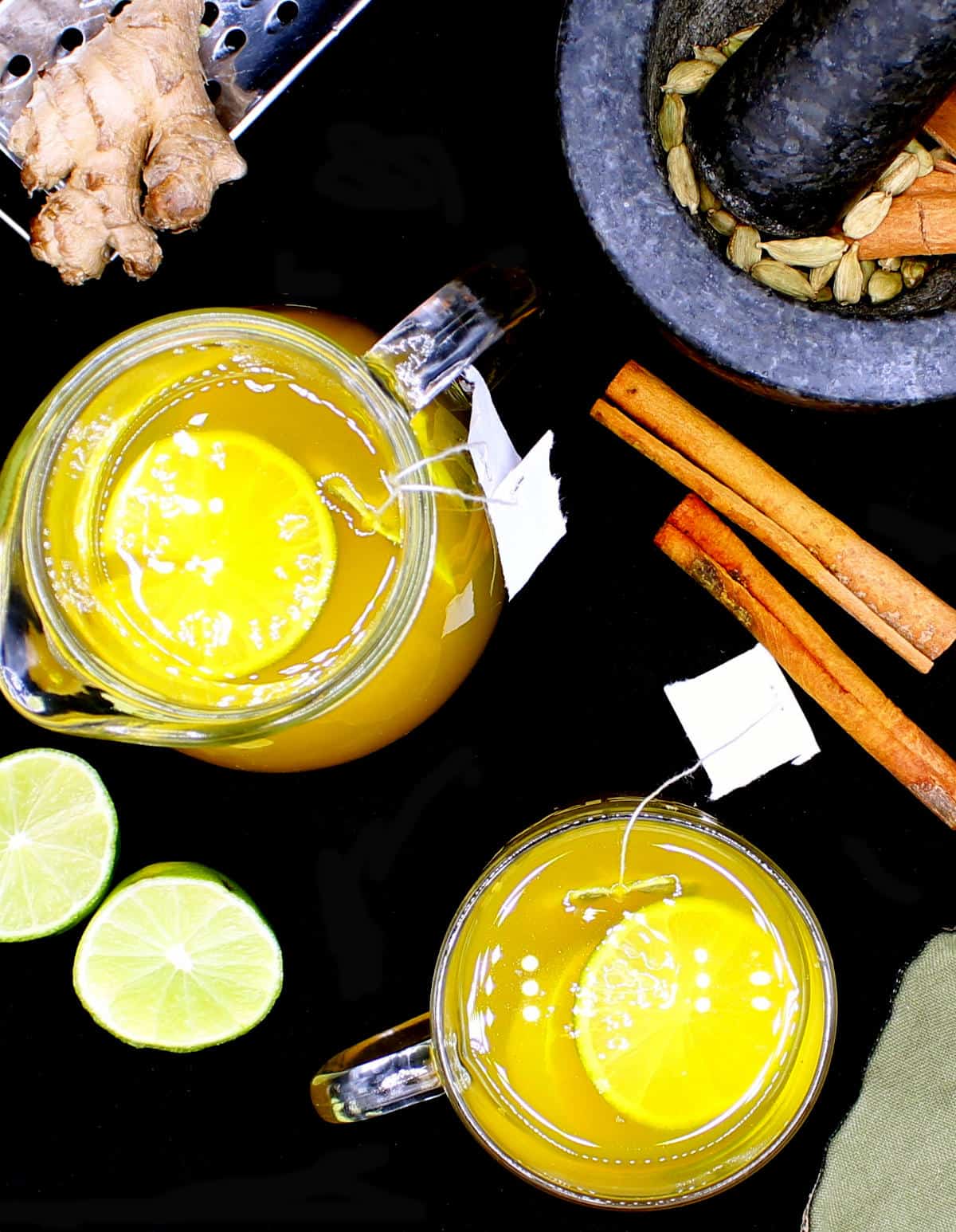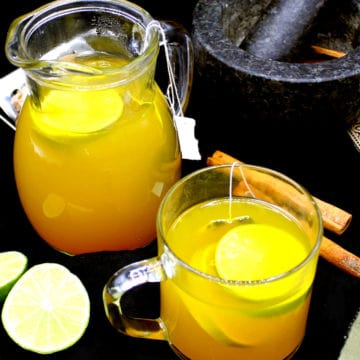You might also like these recipes for vegan golden milk, vegan matcha tea latte and masala chai. A hot cuppa ginger turmeric tea is wonderful any time of year. But it can be especially soothing and delicious during the winter months when the heart, and the tummy, longs for all things cozy. There is so much to love about this ginger turmeric tea. It is truly a comforting drink that will wrap you with warmth from the inside out. The pleasant bitterness of the turmeric is balanced out by the spicy ginger, sweet cardamom and sassy cinnamon. Green tea stirs in more healthfulness and antioxidants. In India, you’d drink a tea like this – a haldi adrak ki chai – if you had the sniffles. But it is also a cleansing, detoxing drink, especially if you have been indulging in those end of year holiday excesses. Treat yourself to a cup this morning – or anytime. I just made some and I can’t wait to go get it into my tummy!
Tips for the best turmeric ginger tea
This turmeric ginger tea can’t be easier. You boil water and throw in a few ingredients as you go. At the end strain it all, preferably with a fine mesh strainer, dunk a green tea bag, stir in stevia or maple syrup or a sweetener of your choice, and hello heaven! I recommend using fresh ingredients for this recipe, and by that I mean not powdered ones. Fresh turmeric root is fairly easy to find these days in markets like Whole Foods, although if you don’t have access to one where you are, turmeric powder is just as fine. Same goes for ginger, which is, of course, much easier to find. And try and use whole spices, which you can crush with a mortar and pestle, instead of powdered versions. Also, in drinks where you are steeping ingredients and trying to extract all the best they have to offer, it’s a good idea to use organic when you can. The reason I recommend using fresh or whole spices in this turmeric ginger tea is because powdered spices, even when strained with a fine-mesh strainer, tend to slip through and into your drink. The dregs at the bottom of the cup aren’t pleasant, and I don’t love them, although, if you don’t mind them, they don’t do any harm. When using fresh turmeric and fresh ginger root, you can use more than the powdered versions, whose flavor and properties tend to be more concentrated. Also, spices taste best and offer the most benefit when they are freshly crushed or grated, so use fresh versions if you can. If powdered is all you can find, that’s perfectly fine too. Check to get new recipe updates by email.
Spices are powerful, so use in moderation
The beneficial properties of spices can sometimes lead people to overuse them. It is important to remember that spices are extremely potent. While they are good in moderation, it’s a good idea to not use too much of any one spice at one time. Ginger, for instance, has very strong warming effects on the body and can cause some digestive discomfort in some people as well as increased bleeding in women who are menstruating. Even turmeric, in very high quantities, has been shown to have problem effects. So always start out with less and use more only if your body can tolerate it. With spices, a rule of thumb is that a little goes a very long way.
Ingredients
Turmeric: There are numerous studies now that show turmeric–or the compound, curcumin, that’s in it – is a miracle antioxidant with unparalleled healing qualities. This golden spice has been a staple in Indian kitchens not so much for its flavor–because turmeric with its earthy bitterness doesn’t really have much to offer in terms of making food taste better–but because a pinch of this golden spice in your food can protect you from all kinds of ailments, big and small. Turmeric can also be beneficial when used topically. When we cut ourselves playing as children, mom was more likely to run for the turmeric in her spice box than a tube of antibiotic. The turmeric would not just ensure that the wound didn’t get infected, it would also keep the scars away. (Read more about the benefits of and cooking with turmeric) Ginger: Like turmeric, ginger is a proven miracle herb with tremendous benefits to the digestive and respiratory systems. It even fights cancer and diabetes. Ginger is also an amazing flavoring agent and one that, to my mind, can make nearly any food taste better. Cinnamon: This is yet another flavorful and amazing spice with respiratory, digestive, cancer-fighting and heart-healthy properties. We have a theme going here, see? Cardamom: I added in the cardamom, which is considered a cooling spice, mainly for the exquisite sweetness and delicate fragrance that makes nearly anything fit to consume. Cardamom, too, is a wonder spice, with respiratory, digestive, anti-cancer and anti-diabetes benefits. Black pepper: Piperine, the active compound in these tiny black globes, helps unlock the tremendous benefits of curcumin in turmeric, so it’s good to add a tiny bit in here. The black pepper also adds a nice kick. Use very little unless you want your tea to be really spicy. Oh, and did I say black pepper is also, by itself, great for you? Green tea: Here’s an ingredient that needs almost no introduction. We all know green tea is packed with antioxidants and is a great detoxicant with possible weight loss benefits. And it tastes amazing with the spices and herbs in this tea. (For a warm-season drink, try this divine cardamom iced green tea!) Sweetener: This is mainly for flavor. Use any of your choice. I use maple syrup but turbinado sugar, any unrefined sugar like jaggery, or sweeteners like stevia are fine too. Lemons or limes: Lemon or lime juice is a natural diuretic. It has tons of vitamin C. It also adds great flavor.
Variations
If you’re looking to make this even more comforting, you can easily turn this into a turmeric milk–or golden milk–recipe. Switch out the water for almond milk or any nondairy milk. I often sip on this golden milk at night before bed, although some of the spices can be stimulating, so watch out and see if if it works for you. You can use chamomile tea instead of green tea at night. You can turn this into a refreshing cool drink as well for hot days. Chill it and serve it over ice. If you’re looking for a more stimulating drink, use black tea instead of green tea.
More delicious turmeric recipes
Recipe card
